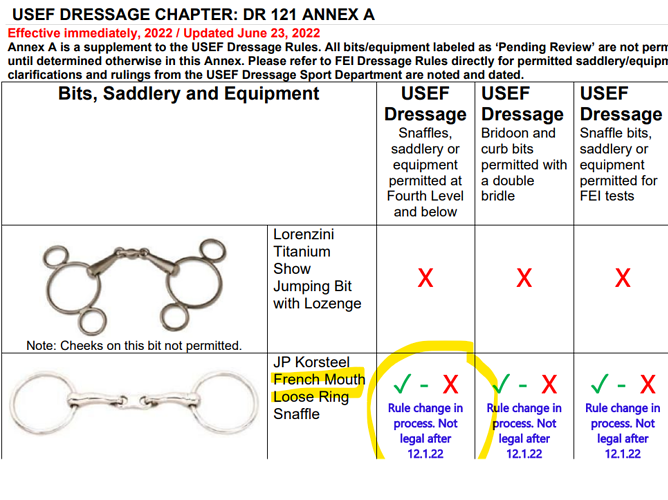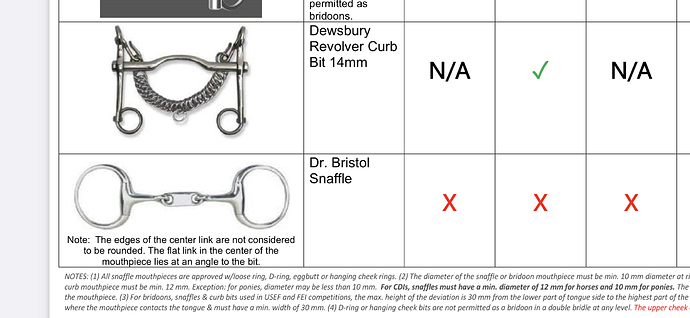After a few months of setbacks and wanting to take my 5-year-old OTTB and RRP entry on his first field trip but not wanting to spend a bazillion dollars at a Hunter/Jumper away show, we are off to his and my first recognized dressage show next Monday!
We are presently entered into Intro A and B tests and have been practicing our tests diligently at home. He’s pretty good - very quiet and has nice transitions, not so accustomed to a ton of contact yet (he’s super lazy, so the forward button has been my focus in our few rides!), but I think he’ll be able to put in a solid test if all goes to plan.  I’ve been studying the bits and attire rulebook, and I think we’ll be quite sharp in our Hunter/Jumper tack with a navy bonnet, navy coat, white shirt, and white breeches, and I’m quite good at button-style braids thanks to my jumper. Our bit of choice is this, which to my understanding, will be legal until December.
I’ve been studying the bits and attire rulebook, and I think we’ll be quite sharp in our Hunter/Jumper tack with a navy bonnet, navy coat, white shirt, and white breeches, and I’m quite good at button-style braids thanks to my jumper. Our bit of choice is this, which to my understanding, will be legal until December.
I’m pretty good at memorization and think a reader would be a little more confusing, so I’m planning to ride the test from memory. I’m curious as to what your standard warm-up/prep looks like as someone coming over from Hunter/Jumper land. I planned to get to the grounds about 90 minutes before our first test - check-in, give him a quick lunge (he’s pretty quiet, but I suspect a new place will have him a bit more up), tack up, and then a 20-minute or so warm-up before heading in.
Thoughts on our plan or general advice for a newbie? Very much looking forward to it!



 Especially if you’re doing everything yourself almost any other color is easier to keep clean.
Especially if you’re doing everything yourself almost any other color is easier to keep clean.